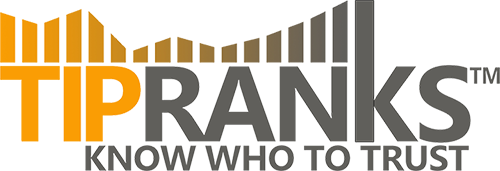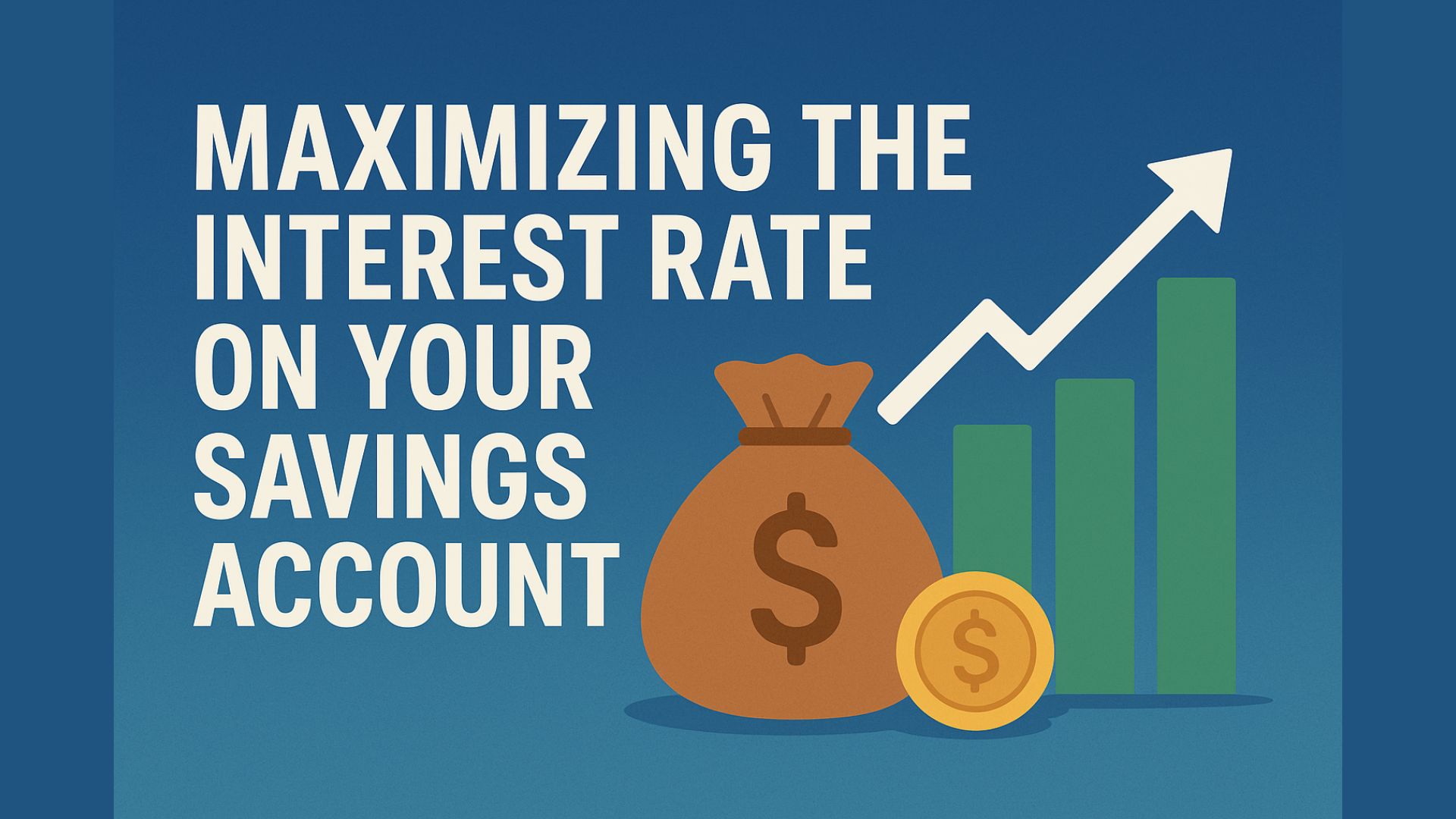Want to make your savings work harder for you? Here’s how to maximize the interest rate on your savings account. We’ll cover essential strategies like choosing the right account type, comparing rates, and leveraging compound interest to ensure maximizing the interest rate on your savings account helps your money grow as quickly as possible.
Key Takeaways
Understanding the different types of savings accounts, such as high-yield savings accounts, money market accounts, and traditional savings accounts, is essential for maximizing interest rates.
Comparing interest rates across various FDIC-insured banks and considering online banks and credit unions can help secure higher returns on savings.
Automating savings and regularly reviewing your financial strategy are crucial for maximizing savings growth and adapting to changing financial circumstances.
Understand Different Types of Savings Accounts
The foundation of any effective savings strategy is understanding the different types of savings accounts available. Each type offers unique benefits and potential drawbacks, and knowing these can help you make an informed decision that aligns with your financial goals. High yield savings accounts, money market accounts, and traditional savings accounts are the primary categories to consider.
Each of these accounts serves a different purpose and comes with its own set of features:
High yield savings accounts typically offer higher interest rates, making them ideal for maximizing your savings.
Money market accounts provide flexibility with check-writing capabilities.
Traditional savings accounts are straightforward but generally offer lower returns.
Let’s break these down further.
High Yield Savings Accounts
High yield savings accounts are a game-changer when it comes to earning more on your deposits. These accounts generally offer better interest rates compared to traditional savings accounts, making them an excellent choice for anyone looking to maximize their higher yield savings. For instance, if you deposit $10,000 in a high-yield savings account with a 4% APY (Annual Percentage Yield), you can earn $400 in interest over a year.
The beauty of high yield savings accounts lies in their accessibility and low risk. These accounts are typically federally insured, which means your money is safe even if the bank fails. Additionally, many high-yield savings accounts have low or no minimum balance requirements, making them accessible to a broad range of savers. However, interest rates can be variable and might decline; monitoring rate trends is advisable.
Finally, high yield savings accounts are excellent tools for building a solid emergency fund or saving for short-term goals. With funds that are easily accessible, you can respond quickly to financial needs without incurring penalties. While they may not offer the highest returns compared to riskier investments like stocks, they provide a reliable and steady growth path for your money.
Money Market Accounts
Money market accounts are another attractive option for those looking to maximize their savings. These accounts offer competitive interest rates and a high degree of flexibility, often coming with check-writing capabilities or debit card access. This makes them a versatile choice for those who need occasional access to their funds without sacrificing the ability to earn interest.
However, money market accounts typically require higher minimum balances and may impose withdrawal limits. Comparing APYs, monthly account fees, and required minimum balances is important when considering a money market account.
Despite these requirements, the competitive rates and flexibility make money market accounts a valuable component of a diversified savings strategy.
Traditional Savings Accounts
Traditional savings accounts are the most straightforward option for savers. Their features include:
Easy to open and maintain
Often no monthly fees
No minimum balance requirements However, they generally offer lower interest rates, with the national average hovering around 0.46%. A traditional savings account typically provides these benefits.
While they may not provide the highest returns, traditional savings accounts are a reliable choice for basic savings needs.
Don’t Overlook Interest-Bearing Checking Accounts
While checking accounts are designed for everyday transactions, some banks now offer accounts that pay interest or provide cash-back rewards. These interest-bearing or rewards checking accounts often come with requirements—such as maintaining a minimum balance, making a set number of debit card purchases, or receiving direct deposit each month.
The appeal is that your everyday cash can earn more interest instead of sitting idle. For instance, a rewards checking account might pay 3% APY on the first $5,000 in your balance, though any money above that cap may drop to a rate closer to the national average. Used strategically, these accounts can be paired with a high yield savings account or money market account to maximize your savings across different needs.
Compare Interest Rates Across Banks

Comparing interest rates across different banks is a crucial step in maximizing your savings. Interest rates can vary significantly between institutions, with some online banks offering rates up to 4.35% annual percentage yield apy, compared to the national average of 0.63%. Shopping around and comparing rates can help your savings grow faster by finding a competitive interest rate.
Many banks, including online institutions, now offer rates significantly above the national average. Regularly tracking interest rate trends and switching to banks offering higher rates can make a substantial difference in your savings.
Why Beating Inflation Matters
Earning interest on your savings feels great, but the bigger question is whether your money is actually keeping up with inflation.
Inflation reduces your purchasing power year over year. For example, if inflation runs at 3% and your bank pays only 0.5% APY, you’re effectively losing money in real terms.
Over a decade, that gap can make a significant difference in how far your dollars stretch toward living expenses, property taxes, or future financial goals.
Maximizing the interest rate on your savings account is about more than chasing higher numbers. It’s about protecting the value of your money.
By choosing high yield savings accounts, money market accounts, or competitive credit union offers, you can narrow the gap between inflation and your returns—helping your savings grow faster and hold their value in the real world.
Online Banks vs. Traditional Banks
Online banks often provide higher interest rates compared to traditional banks due to their lower overhead costs. Opening accounts with online banks can yield better interest rates and lower fees, making them an attractive option for savers looking to maximize their returns.
Comparing interest rates from various banks is crucial as they fluctuate, with online banks typically offering higher rates than traditional ones. Regularly tracking these trends can help you choose the best savings accounts available.
Credit Unions
Credit unions are known for offering competitive interest rates and personalized customer service. Due to their nonprofit status, a credit union can provide more favorable interest rates on savings accounts compared to large commercial banks.
Personalized service is a hallmark of credit unions, allowing for tailored financial solutions that larger institutions may not offer. This focus on member benefits rather than profit often results in better interest rates and more personalized service.
Leverage Compound Interest
Compound interest is a powerful tool that can significantly enhance the growth of your savings. Unlike simple interest, which is calculated only on the initial deposit, compound interest builds on both the deposit and previously earned interest. This snowball effect creates exponential growth in your savings, as interest payments increase significantly over time.
A small increase in the interest rate, such as from 2% to 3%, can lead to more interest and a significant difference in notably faster growth in savings due to the effects of compounding. Understanding and leveraging compound interest is essential for any effective savings strategy.
Compounding Frequency
Compounding frequency refers to how often interest is calculated and added to the account balance. More frequent compounding leads to faster growth of savings because interest is earned on previously accumulated interest.
Choosing savings accounts that offer daily or monthly compounding can maximize the growth of your savings over time. Increasing the frequency of compounding can lead to a higher total amount earned because interest accumulates more often.
Reinvesting Earnings
Reinvesting your earned interest can significantly amplify the growth of your savings over time. By allowing your interest to earn interest works, you enhance the overall growth of your savings, making your money work harder for you through long term investments.
Automate Your Savings

Automating your savings is a straightforward way to ensure consistent growth. By setting up automatic transfers from your checking account to your savings account, you can streamline your savings process and ensure regular deposits. This consistency is key to building your savings over time.
Using separate savings accounts for different goals can help you track progress and stay motivated. Automation increases consistency in saving, making it easier to build your savings over time.
Automatic Transfers
By setting up automatic transfers from checking to savings, you can simplify your savings routine. Regular automatic transfers help maintain consistent growth in savings by ensuring deposits are made regularly.
Think about establishing automatic transfers on a designated day each month during a set period. You could also align them with each pay period to help create a habit. This helps prioritize savings and ensures consistency, allowing you to effortlessly build your savings over time.
Consistent Saving Habits
Building a saving habit requires time and can be significantly enhanced by automating the savings process. Automation aids in making saving a routine, thereby reinforcing financial discipline and long-term wealth accumulation, allowing you to save consistently.
Want to learn about what to do with your savings? Read The #1 Wealth Habit Young People Skip.
Minimize Fees and Balance Requirements

Minimizing fees and managing balance requirements are critical to maintaining the growth of your savings. Consider the following:
High fees can significantly reduce your interest earnings.
Choose accounts that charge fees with low fees and manageable balance requirements.
Many of the top high-yield savings accounts do not impose monthly maintenance fees.
Choosing accounts with low fees and manageable balance requirements helps you keep more of your money growing over time. Traditional savings accounts typically do not charge monthly fees, making them straightforward for basic saving needs.
Monthly Maintenance Fees
Avoiding accounts with monthly fees can maximize savings. High yield savings accounts typically do not impose monthly maintenance fees, and a significant number of these accounts offer no monthly service charges.
Some accounts, like the EverBank Performance Savings account, have no monthly fees and a $0 opening requirement. Be aware of limits on the number of savings accounts you can maintain without incurring minimal fees.
Minimum Balance Requirements
Choosing savings accounts with manageable minimum balance requirements helps you avoid penalties, allowing more of your money to grow. For example, Forbright Bank’s Growth Savings account has no minimum opening deposit required, and the TAB Save account also has no minimum balance requirements.
Utilize Promotional Offers
Promotional offers can significantly boost your savings. Banks often provide limited-time promotions with higher interest rates for new accounts or bonuses for account openings. These offers can temporarily enhance potential savings by providing better rates than standard ones.
Many banks provide promotional rates that can significantly boost savings for new account holders. Taking advantage of these offers can help maximize your savings.
Introductory Rates
Savings accounts that offer attractive introductory rates usually provide a higher interest rate for a specific initial period, which can help maximize early earnings. These temporary savings account offers allow new customers to earn interest at rates higher than the standard ones, typically for a limited time.
Some savings accounts feature introductory rates that exceed standard rates for an initial period, making them appealing for new customers. By taking advantage of these higher yields, you can significantly boost your savings during the introductory period.
Bonus Incentives
Some banks offer cash bonuses for opening new accounts or transferring substantial funds, which can further increase your savings. These bonuses often come with conditions, such as maintaining a minimum balance or setting up direct deposits within a designated timeframe in banking.
Opening a new account can yield cash bonuses based on criteria like maintaining a minimum balance or setting up direct deposits. By meeting these requirements, you can enhance your savings without much extra effort.
Diversify Savings Strategies
Diversifying your savings strategies is essential for optimizing returns. Utilizing a mixture of different savings products can enhance overall returns. These products include:
High yield savings accounts
Certificates of deposit (CDs)
Money market accounts
This approach allows you to benefit from the strengths of each type of account, leading to improved financial outcomes.
Using dedicated separate savings accounts for each goal allows for clear tracking of progress and savings effectiveness. Strategies to maximize savings include seeking the best interest rates, comparing institutions, and diversifying accounts.
Certificates of Deposit (CDs)
Certificates of Deposit (CDs) typically offer interest rates that exceed those of standard savings accounts. A CD guarantees a fixed interest rate for the entire term of the deposit, providing a predictable return on investment.
A CD is a savings product that allows you to deposit money for a specified term in exchange for a fixed interest rate. This makes CDs an excellent choice for long-term savings goals where you don’t need immediate access to your funds.
Multiple Accounts
Opening various types of accounts allows savers to capitalize on different interest rates. Diversifying account types can provide flexibility in accessing funds while maximizing interest earnings.
Personalizing accounts with nicknames can help track different savings goals, making it easier to stay organized and motivated with one account.
Match Accounts to Your Savings Goals
Not every dollar you save has the same purpose, which means not every dollar belongs in the same account. A high yield savings account is perfect for an emergency fund, where you need money safe, liquid, and earning more interest than a traditional savings account. A money market account can be used for mid-term goals, like saving for a down payment or upcoming property taxes, since it provides competitive rates with limited access features. Certificates of deposit are better suited for long term savings, offering a fixed interest rate over a set period in exchange for locking up funds.
By aligning your accounts with your goals, you can maximize your savings in a way that balances access, growth, and security. This strategy not only helps your savings grow faster but also keeps you disciplined by separating money earmarked for specific purposes.
Regularly Review and Adjust Your Strategy
Regularly reviewing and adjusting your savings strategy is crucial for maximizing returns. Interest rates and financial goals can change over time, so it’s vital to periodically assess your savings tactics to ensure they align with these changes. Adjusting your savings strategy based on financial changes is essential for maximizing returns.
Automating savings helps in achieving financial goals efficiently by eliminating manual transfers. Regular automated deposits create a barrier against impulsive spending, making it less likely to access savings for non-essential purchases.
Monitoring Interest Rates
Inflation can erode the purchasing power of savings over time. Staying informed about interest rates is crucial because they can significantly affect your savings account returns. Adjusting your savings strategy based on interest rate changes can help maximize your returns.
Regularly reviewing and adjusting your strategy in response to interest rate changes can lead to better savings outcomes. By monitoring these rates, you can make informed decisions that enhance your financial success.
Adapting to Financial Goals
Regularly reassessing your financial objectives ensures that your savings approach remains relevant to your changing circumstances, including your living expenses. As your life changes, so too should your savings strategy. To achieve your goals, it’s essential to stay committed to regularly reviewing your financial aspirations, allowing you to modify your savings strategies to better meet changing life circumstances.
By adapting your savings strategies to align with your current personal finance priorities and market conditions, you can ensure that your savings grow efficiently. This proactive approach helps in maximizing your savings and achieving long-term financial success.
Summary
Maximizing the interest rate on your savings account requires a proactive and informed approach. By understanding the different types of savings accounts, comparing interest rates across various banks, leveraging compound interest, automating your savings, minimizing fees, and taking advantage of promotional offers, you can significantly enhance the growth of your savings.
Remember, regularly reviewing and adjusting your savings strategy is crucial for aligning with changing financial goals and market conditions. By implementing these strategies, you can ensure that your savings grow efficiently and effectively, paving the way for a more secure financial future.
Frequently Asked Questions
The main benefit of a high yield savings account is that it provides higher interest rates than traditional savings accounts, enabling your savings to grow more quickly.
Compound interest significantly benefits your savings by enabling them to grow exponentially, as it accrues on both your initial deposit and the interest earned previously. This compounding effect leads to increased returns over time.
Consider using online banks for their potential to offer higher interest rates and lower fees, which can significantly enhance your savings. This financial benefit stems from their reduced overhead costs compared to traditional banks.
Utilizing multiple savings accounts allows you to take advantage of varying interest rates, maximizing earnings while maintaining access to your funds. This strategy provides both financial flexibility and enhanced savings potential.
To avoid monthly maintenance fees on your savings account, select high-yield savings accounts that generally do not charge such fees, and ensure you meet any specific account requirements to prevent penalties.
Ranking of Top Stock Newsletters Based on Last 3 Years of Stock Picks as of September 27, 2025
We are paid subscribers to dozens of stock and option newsletters. We actively track every recommendation from all of these services, calculate performance, and share our results of the top performing stock newsletters whose subscriptions fees are under $500. The main metric to look for is “Return vs S&P500” which is their return above that of the S&P500. So, based on September 27, 2025 prices:
Best Stock Newsletters
RankStock NewsletterPicksReturnReturnvs S&P500Picksw ProfitMax %ReturnCurrent Promotion
1.
 Alpha Picks90.5%65.0%76%1,478%Oct, 2025 Promotion:Save $50
Alpha Picks90.5%65.0%76%1,478%Oct, 2025 Promotion:Save $50
Summary: 2 picks/month based on Seeking Alpha’s Quant Rating; Retail Price is $499/yr. See complete details and analysis in our Alpha Picks Review.
2.
 Moby.co52.4%16.5%74%2,412%Oct, 2025 Promotion:Next pick free!
Moby.co52.4%16.5%74%2,412%Oct, 2025 Promotion:Next pick free!
Summary: 60-150 stock picks per year, segmented by industry; Retail Price is $199/yr. Read our Moby Review.
3.
 Zacks Top 1035.3%16.4%76%170%Oct, 2025 Promotion:$1, then $495/yr
Zacks Top 1035.3%16.4%76%170%Oct, 2025 Promotion:$1, then $495/yr
Summary: 10 stock picks per year on January 1st based on Zacks’ Quant Rating; Retail Price is $495/yr. Read our Zacks Review.
4.
 TipRanks SmartInvestor20.8%9.4%63%430%Current Promotion:Save $180
TipRanks SmartInvestor20.8%9.4%63%430%Current Promotion:Save $180
Summary: About 1 pick/week focusing on short term trades; Lifetime average return of 355% vs S&P500’s 149% since 2015. Retail Price is $379/yr. Read our TipRanks Review.
5.
 Stock Advisor46.0%7.6%74%330%Oct, 2025 Promotion:Get $100 Off
Stock Advisor46.0%7.6%74%330%Oct, 2025 Promotion:Get $100 Off
Summary: 2 picks/month and 2 Best Buy Stocks lists focusing on high growth potential stocks over 5 years; Retail Price is $199/yr. Read our Motley Fool Review.
6.
 Action Alerts Plus26.2%4.9%65%208%Current Promotion:None
Action Alerts Plus26.2%4.9%65%208%Current Promotion:None
Summary: 100-150 trades per year, lots of buying and selling and short-term trades. Read our Jim Cramer Review.
7.
 Zacks Home Run Investor5.1%0.1%46%299%Oct, 2025 Promotion:$1, then $495/yr
Zacks Home Run Investor5.1%0.1%46%299%Oct, 2025 Promotion:$1, then $495/yr
Summary: 40-50 stock picks per year based on Zacks’ Quant Rating; Retail Price is $495/yr. Read our Zacks Review.
8.IBD Leaderboard ETF11.4%-1.8%n/an/aOct, 2025 Promotion:None
Summary: Maintains top 50 stocks to invest in based on IBD algorithm; Retail Price is $495/yr. Read our Investors Business Daily.
9.
 Zacks Under $102.0%-2.1%38%263%Oct, 2025 Promotion:$1, then $495/yr
Zacks Under $102.0%-2.1%38%263%Oct, 2025 Promotion:$1, then $495/yr
Summary: 40-50 stock picks per year based on Zacks’ Quant Rating; Retail Price is $495/yr. Read our Zacks Review.
10.
 Hidden Gems35.6%-3.1%69%240%Current Promotion:Save $200
Hidden Gems35.6%-3.1%69%240%Current Promotion:Save $200
Summary: 5 picks/month focusing on disruptive technology and business models; Lifetime average return of 355% vs S&P500’s 149% since 2005; Now part of Motley Fool Epic. Read our Motley Fool Epic Review.
Top Ranking Stock Newsletters based on their last 3 years of stock picks covering 2025, 2024, 2023, part of 2022 performance as compared to S&P500. S&P500’s return is based on average return of S&P500 from date each stock pick is released. NOTE: To get these results you must buy equal dollar amounts of each pick on the date the stock pick is released. Investor Business Daily Top 50 based on performance of FFTY ETF. Performance as of September 27, 2025.
Ranking of Top Stock Newsletters Based on Last 3 Years of Stock Picks as of September 27, 2025
We are paid subscribers to dozens of stock and option newsletters. We actively track every recommendation from all of these services, calculate performance, and share our results of the top performing stock newsletters whose subscriptions fees are under $500. The main metric to look for is “Return vs SP500” which is their return above that of the S&P500. So, based on September 27, 2025 prices:
Best Stock Newsletters
RankStock NewsletterPicksReturnReturnvs SP500Picksw ProfitMax %ReturnCurrent Promotion
1.
 Alpha Picks%51.1%78%969%Oct, 2025 Promotion:Save $50
Alpha Picks%51.1%78%969%Oct, 2025 Promotion:Save $50
Summary: 2 picks/month based on Seeking Alpha’s Quant Rating; Retail Price is $499/yr. See complete details and analysis in our Alpha Picks Review.
2.
 Moby.co52.5%18.1%73%2,406%Oct, 2025 Promotion:Next pick free!
Moby.co52.5%18.1%73%2,406%Oct, 2025 Promotion:Next pick free!
Summary: 60-150 stock picks per year, segmented by industry; Retail Price is $199/yr. Read our Moby Review.
3.
 Zacks Top 1033.0%15.1%73%170%Oct, 2025 Promotion:$1, then $495/yr
Zacks Top 1033.0%15.1%73%170%Oct, 2025 Promotion:$1, then $495/yr
Summary: 10-25 stock picks per year based on Zacks’ Quant Rating; Retail Price is $495/yr. Read our Zacks Review.
4.
 TipRanks SmartInvestor18.6%7.6%65%386%Current Promotion:Save $180
TipRanks SmartInvestor18.6%7.6%65%386%Current Promotion:Save $180
Summary: About 1 pick/week focusing on short term trades; Lifetime average return of 355% vs S&P500’s 149% since 2015. Retail Price is $379/yr. Read our TipRanks Review.
5.
 Stock Advisor41.7%6.1%76%299%Oct, 2025 Promotion:Get $100 Off
Stock Advisor41.7%6.1%76%299%Oct, 2025 Promotion:Get $100 Off
Summary: 2 picks/month and 2 Best Buy Stocks lists focusing on high growth potential stocks over 5 years; Retail Price is $199/yr. Read our Motley Fool Review.
6.
 Action Alerts Plus25.9%4.9%65%210%Current Promotion:None
Action Alerts Plus25.9%4.9%65%210%Current Promotion:None
Summary: 100-150 trades per year, lots of buying and selling and short-term trades. Read our Jim Cramer Review.
7.
 Rule Breakers35.6%1.2%78%273%Current Promotion:Save $200
Rule Breakers35.6%1.2%78%273%Current Promotion:Save $200
Summary: 2 picks/month focusing on disruptive technology and business models; Lifetime average return of 355% vs S&P500’s 149% since 2005; Now part of Motley Fool Epic. Read our Motley Fool Epic Review.
8.
 Zacks Home Run Investor3.5%-1.3%44%200%Oct, 2025 Promotion:$1, then $495/yr
Zacks Home Run Investor3.5%-1.3%44%200%Oct, 2025 Promotion:$1, then $495/yr
Summary: 40-50 stock picks per year based on Zacks’ Quant Rating; Retail Price is $495/yr. Read our Zacks Review.
9.IBD Leaderboard ETF11.4%-1.8%n/an/aOct, 2025 Promotion:Save $129/yr
Summary: Maintains top 50 stocks to invest in based on IBD algorithm; Retail Price is $495/yr. Read our Investors Business Daily.
10.
 Stock Advisor Canada23.5%-4.6%69%378%Oct, 2025 Promotion: Save $100
Stock Advisor Canada23.5%-4.6%69%378%Oct, 2025 Promotion: Save $100
Summary: 1 pick/month from the Toronto stock exchange; Retail Price is CD$199/yr. Read our Motley Fool Canada Stock Advisor Review.
Top Ranking Stock Newsletters based on their 2024, 2023, 2022 stock picks’ performance as compared to S&P500. S&P500’s return is based on average return of S&P500 from date each stock pick is released. NOTE: To get these results you must buy equal dollar amounts of each pick on the date the stock pick is released. Investor Business Daily Top 50 based on performance of FFTY ETF. Performance as of September 27, 2025.
–>
–>



























